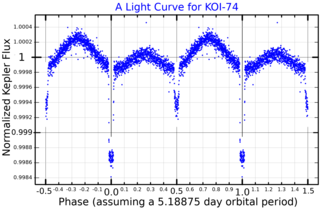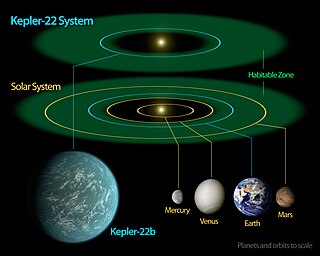Related Research Articles

Lyra is a small constellation. It is one of the 48 listed by the 2nd century astronomer Ptolemy, and is one of the modern 88 constellations recognized by the International Astronomical Union. Lyra was often represented on star maps as a vulture or an eagle carrying a lyre, and hence is sometimes referred to as Vultur Cadens or Aquila Cadens, respectively. Beginning at the north, Lyra is bordered by Draco, Hercules, Vulpecula, and Cygnus. Lyra is nearly overhead in temperate northern latitudes shortly after midnight at the start of summer. From the equator to about the 40th parallel south it is visible low in the northern sky during the same months.

David Brian Charbonneau is a professor of Astronomy at Harvard University. His research focuses on the development of novel techniques for the detection and characterization of exoplanets orbiting nearby, Sun-like stars.

Sara Seager is a Canadian–American astronomer and planetary scientist. She is a professor at the Massachusetts Institute of Technology and is known for her work on extrasolar planets and their atmospheres. She is the author of two textbooks on these topics, and has been recognized for her research by Popular Science, Discover Magazine, Nature, and TIME Magazine. Seager was awarded a MacArthur Fellowship in 2013 citing her theoretical work on detecting chemical signatures on exoplanet atmospheres and developing low-cost space observatories to observe planetary transits.

KOI-74 is an eclipsing binary star in the constellation of Cygnus. The primary star is an A-type main-sequence star with a temperature of 9,400 K. It lies in the field of view of the Kepler Mission and was determined to have a companion object in orbit around it which is smaller and hotter than the main star.

KOI-81 is an eclipsing binary star in the constellation of Cygnus. The primary star is a late B-type or early A-type main-sequence star with a temperature of 10,000 K. It lies in the field of view of the Kepler Mission and was determined to have an object in orbit around it which is smaller and hotter than the main star.

Kepler-223 is a G5V star with an extrasolar planetary system discovered by the Kepler mission. Studies indicate that the Kepler-223 star system consists of 4 planets orbiting the star.

Kepler-22b is an exoplanet orbiting within the habitable zone of the Sun-like star Kepler-22. It is located about 640 light-years from Earth in the constellation of Cygnus. It was discovered by NASA's Kepler Space Telescope in December 2011 and was the first known transiting planet to orbit within the habitable zone of a Sun-like star, where liquid water could exist on the planet's surface. Kepler-22 is too dim to be seen with the naked eye.
Kepler-33 is a star about 4,000 light-years in the constellation of Cygnus, with a system of five known planets. Having just begun to evolve off from the main sequence, its radius and mass are difficult to ascertain, although data available in 2020 shows its best-fit mass of 1.3M☉ and radius of 1.6R☉ are compatible with a model of a subgiant star.
Kepler-32 is an M-type main sequence star located about 1053 light years from Earth, in the constellation of Cygnus. Discovered in January 2012 by the Kepler spacecraft, it shows a 0.58 ± 0.05 solar mass (M☉), a 0.53 ± 0.04 solar radius (R☉), and temperature of 3900.0 K, making it half the mass and radius of the Sun, two-thirds its temperature and 5% its luminosity.
Kepler-23 is a star in the northern constellation of Cygnus, the swan. It is orbited by three known exoplanets. With an apparent visual magnitude of 14.0, this star is too faint to be seen with the naked eye.

Kepler-26 is a star in the northern constellation of Lyra. It is located at the celestial coordinates: Right Ascension 18h 59m 45.8408s Declination +46° 33′ 59.438″. With an apparent visual magnitude of 15.5, this star is too faint to be seen with the naked eye.

Kepler-138, also known as KOI-314, is a red dwarf located in the constellation Lyra, 219 light years from Earth. It is located within the field of vision of the Kepler spacecraft, the satellite that NASA's Kepler Mission used to detect planets transiting their stars.
Kepler-30 is a star in the northern constellation of Lyra. It is located at the celestial coordinates: Right Ascension 19h 01m 08.0746s Declination +38° 56′ 50.218″. With an apparent visual magnitude of 15.5, this star is too faint to be seen with the naked eye. Kepler-30 is exhibiting a strong starspot activity.
Kepler-31 is a star in the northern constellation of Cygnus, the swan. It is orbited by three known exoplanets. It is located at the celestial coordinates: Right Ascension 19h 36m 05.5270s, Declination +45° 51′ 11.108″. With an apparent visual magnitude of 14.0, this star is too faint to be seen with the naked eye.

Kepler-27 is a star in the northern constellation of Cygnus, the swan. It is located at the celestial coordinates: Right Ascension 19h 28m 56.81962s, Declination +41° 05′ 09.1405″. With an apparent visual magnitude of 15.855, this star is too faint to be seen with the naked eye.
Kepler-28 is a star in the northern constellation of Cygnus., It is orbited by two exoplanets. It is located at the celestial coordinates: Right Ascension 19h 28m 32.8905s, Declination +42° 25′ 45.959″. With an apparent visual magnitude of 15.036, this star is too faint to be seen with the naked eye.
Kepler-160 is a main-sequence star approximately the width of our Galactic arm away in the constellation Lyra, first studied in detail by the Kepler Mission, a NASA-led operation tasked with discovering terrestrial planets. The star, which is very similar to the Sun in mass and radius, has three confirmed planets and one unconfirmed planet orbiting it.
KOI-5 is a triple star system composed of three stars: KOI-5 A, KOI-5 B and KOI-5 C, orbiting 1,870±70 light-years away.
Kepler-1658b is a hot Jupiter, a type of gas giant exoplanet, that orbits an F-type star called Kepler 1658, located about 2629 light-years away from the Solar System. It is the first planet identified by the Kepler space telescope after its launch in 2009, but later ruled out as false alarm since its transit could not be confirmed. A study published in 2019 established it as a planet, describing it as "the closest known planet in terms of orbital period to an evolved star." Analysis of the Transiting Exoplanet Survey Satellite (TESS) data in 2022 showed that it is gradually spiraling into its star.
References
- 1 2 3 4 5 Vallenari, A.; et al. (Gaia collaboration) (2023). "Gaia Data Release 3. Summary of the content and survey properties". Astronomy and Astrophysics. 674: A1. arXiv: 2208.00211 . Bibcode:2023A&A...674A...1G. doi: 10.1051/0004-6361/202243940 . S2CID 244398875. Gaia DR3 record for this source at VizieR.
- 1 2 "The Extrasolar Planet Encyclopaedia — Catalog Listing". Extrasolar Planets Encyclopaedia . 2011-08-02. Archived from the original on 2012-01-21. Retrieved 2013-02-28.
- 1 2 Buchhave, Lars A.; Bitsch, Bertram; Johansen, Anders; Latham, David W.; Bizzarro, Martin; Bieryla, Allyson; Kipping, David M. (2018), "Jupiter Analogs Orbit Stars with an Average Metallicity Close to That of the Sun", The Astrophysical Journal, 856 (1): 37, arXiv: 1802.06794 , Bibcode:2018ApJ...856...37B, doi: 10.3847/1538-4357/aaafca , S2CID 119332645
- ↑ "Kepler-15". SIMBAD . Centre de données astronomiques de Strasbourg . Retrieved 2020-08-09.
- ↑ Borucki; Koch; Gibor Basri; Natalie Batalha; Brown; Bryson; Douglas Caldwell; Jørgen Christensen-Dalsgaard; Cochran; DeVore, Edna; Dunham, Edward W.; Gautier III, Thomas N.; Geary, John C.; Gilliland, Ronald; Gould, Alan; Howell, Steve B.; Jenkins, Jon M.; Latham, David W.; Lissauer, Jack J.; Marcy, Geoffrey W.; Rowe, Jason; Sasselov, Dimitar; Boss, Alan; Charbonneau, David; Ciardi, David; Doyle, Laurance; Dupree, Andrea K.; Ford, Eric B.; Fortney, Jonathan; Holman, Matthew J.; et al. (2011). "Characteristics of planetary candidates observed by Kepler, II: Analysis of the first four months of data". arXiv: 1102.0541v1 [astro-ph.EP].
- ↑ "TEPCat: Kepler-15". Astro.keele.ac.uk. 2013-02-21. Retrieved 2013-02-28.
- ↑ Endl, Michael; et al. (2011). "Kepler-15b: A Hot Jupiter Enriched in Heavy Elements and the First Kepler Mission Planet Confirmed with the Hobby-Eberly Telescope". The Astrophysical Journal Supplement Series. 197 (1). 13. Bibcode: 2011ApJS..197...13E . doi: 10.1088/0067-0049/197/1/13 . hdl: 2152/42925 .
- ↑ Borucki; Koch; Gibor Basri; Natalie Batalha; Brown; Bryson; Douglas Caldwell; Jørgen Christensen-Dalsgaard; Cochran; DeVore, Edna; Dunham, Edward W.; Gautier III, Thomas N.; Geary, John C.; Gilliland, Ronald; Gould, Alan; Howell, Steve B.; Jenkins, Jon M.; Latham, David W.; Lissauer, Jack J.; Marcy, Geoffrey W.; Rowe, Jason; Sasselov, Dimitar; Boss, Alan; Charbonneau, David; Ciardi, David; Doyle, Laurance; Dupree, Andrea K.; Ford, Eric B.; Fortney, Jonathan; Holman, Matthew J.; et al. (2011). "Characteristics of planetary candidates observed by Kepler, II: Analysis of the first four months of data". arXiv: 1102.0541v1 [astro-ph.EP].
- ↑ Planet Kepler-15 b on explanet.eu